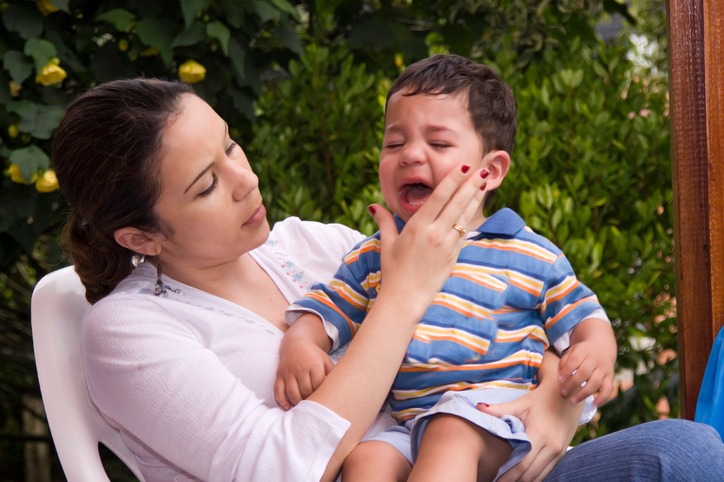
Charlie’s parents felt like they were walking on eggshells.
A simple family party often set off the three year-old. The unfamiliar setting, the commotion, and relatives trying to hug and kiss the boy could easily send him into a kicking and screaming fit. Usually quiet, Charlie routinely burst into tantrums for reasons neither his parents nor his pediatrician could explain.
Such difficult behaviors, meltdowns, and tantrums are a major concern for many parents and professionals. Yet most strategies to remedy problematic behaviors often fall short. Why? They are based on a false premise: that the child has control over thoughts, emotions and behaviors. We incorrectly assume children have the capacity to plan, analyze, and intentionally control the overwhelming emotions that cause tantrums.
In reality, many children have not yet developed these skills. And if a child lacks the ability to control her behavior, then no amount of reasoning, offering incentives, or appeals to “mind power” can convince her to behave.
What we often fail to recognize is that a child’s ability to control behaviors with what professionals call “top-down” thinking develops over time. Robust top-down thinking varies from child to child and depends on many factors, including genetics, relationships and the child’s environment. Tina Bryson and Dan Siegel call the part of the brain that manages “top-down” thinking the “upstairs brain”.
Most children with persistent tantrums aren’t purposefully misbehaving. They are experiencing stress responses due to immaturity in their social-emotional development.
How best to address this immaturity? We need to begin by building emotional stability and balance from the “bottom-up.”We do this by finding ways to help each child feel safe through loving relationships that provide psychological security and respect each child’s individual differences. We must prioritize soothing the bottom, reactive and primitive “downstairs” brain first, before anything else.
When we use top-down strategies to help children whose bottom-up capacities are not yet strong, we send them the false message that they can control themselves if only they try hard enough. Repeatedly hearing this can take a steep toll on a child’s budding self- image and self-confidence, and the parent-child relationship.
We need to understand that controlling one’s emotions and behaviors requires that certain foundations be in place first. The foundation of self-control requires emotional regulation, or the ability to feel safe and calm. For a child to learn how to calm his body and mind requires caregivers who are able to be soothing in a way that works for each particular child. Emotional regulation develops from loving emotional co-regulation with loving adults. It doesn’t simply develop on its own.
Over time, these abilities form the foundation of the child’s emotional house, lovingly and patiently built by parents and caregivers attuned to the child’s unique needs. It’s our role to work on the foundation of emotional stability, always making sure it is secure. With that bottom-up approach, over time, even children like Charlie can learn to cope with the unexpected and unfamiliar.
Some things to keep in mind to help build a child’s “top-down” abilities by working from the “bottom-up”:
- Attune yourself emotionally with the child before addressing behaviors or jumping to solutions. Find ways to communicate (without words) the message that “I see your struggle and you are not alone.” We are accustomed to talking first, when our first step should be simply to join the child emotionally, sending a signal that he is safe. Feeling safe (also known as experiencing the neuroception of safety) is a critical foundation of emotional health.
- After compassionately recognizing the child’s emotions, help the child to calm down in her body and mind. Each child has her own natural preferences for how to be soothed. For some, a soft voice does the trick; for others it might be gentle rocking, and for still others, a loving hug. Other children might prefer that you provide a loving presence without doing anything at all. Over time, determine the keys to help each child find ways to experience a calm state in the physical body.
- Once a child has mastered the ability to calm down with the help of loving adults, we can start using “top-down” thinking to help the child figure out how to plan ahead and learn new ways to cope. But this works only after the foundation of emotional regulation is solid.
- Helping children starts with cultivating our own emotional stability, calmness, and regulation. Children’s tantrums can upend our ability to remain calm and rational. It helps to remember that the child is not purposefully misbehaving, but experiencing a stress response. Our compassionate presence, with an eye to the child’s unique needs, is the best way to soothe a child and ease emotional turmoil.
Source: Dr. Mona Delahooke




